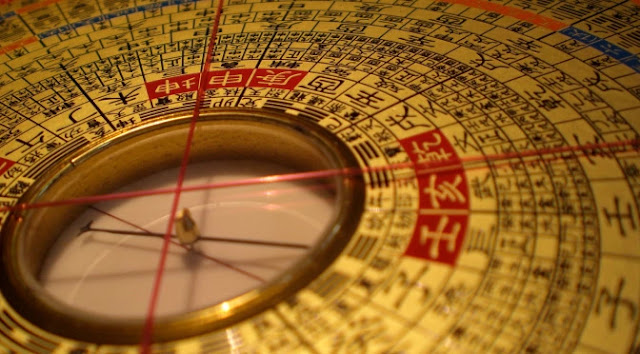History of Feng Shui
History of Feng Shui. Feng Shui is the practice of ancient China that uses certain laws that regulate heaven and earth which can be increased through what is called positive Qi. The history of Feng Shui is ancient and covers more than 3,500 years. That's even older than the discovery of magnetic compasses. The main part of the origin can be from ancient astronomy.
The History of Feng Shui astronomy is evident in ancient instruments developed in practice. The earliest known Feng Shui instrument is what is known as gnomon. This instrument is used in conjunction with trying to circle stars to determine the north and south axes. This is basically used to lay down early Chinese settlements.
Ancient Yangshao and Hongshan cultures in China provide the earliest evidence of feng shui practices. As early as 4000 BC, the doors of the Banpo house were aligned with a star called Yingshi right after the winter solstice. This allows homes to be placed to get better diesel fuel. During the Zhou era, the Yingshi star was known as Ding and had a great influence in trying to determine the right time to build their capital city. This is according to records in Shijing.
Other examples of the practice of ancient feng shui can also be found from the graves in Puyang which date from around 3000 BC. This special tomb contains a mosaic of stars called Naga and Macan along with Beidou, which is known in the Western world as the Big Dipper constellation. Mosaics seem to be oriented along the north to south axis. The presence of round and square shapes is also found in the Puyang tomb and at the center of the Hongshan cultural ceremony and the former Longshan settlement. This evidence shows that the practice of gaitian astronomy (belief in round earth and square earth) already existed in ancient Chinese society.
One of the oldest instruments used in ancient feng shui is the saliva astrolabe. This ancient instrument consists of a lacquered two-sided board equipped with an astronomical line of sight. The oldest saliva astrolabe has been found and found from tombs dating from 278 BC and 209 BC. This ancient astrolabe shows a hook-cable diagram and some of it is found to even cover three magic squares. The mark on this instrument remains unchanged, from the ancient astrolabe to the first magnetic compass.
Astronomical practices that have a striking resemblance to many devices and the theory of modern feng shui are also found in jade artifacts found in Hanshan which date around 3000 BC. Ancient buildings in China including palaces in the capital are all influenced by feng shui in design and layout. The rules followed were written during the Zhou era in "Kaogong ji", or "Manual of Crafts".
Also Read : 4 Benefits of Smiling for Body Health
Magnetic compass was originally created for the practice of feng shui and has been used since its discovery. Traditional feng shui instruments include Luopans or spoons that point to the previous south or zhinan zhen. This shows the extent to which the history of feng shui and its practices have long existed in ancient Chinese history.
 |
| History of Feng Shui |
Ancient Yangshao and Hongshan cultures in China provide the earliest evidence of feng shui practices. As early as 4000 BC, the doors of the Banpo house were aligned with a star called Yingshi right after the winter solstice. This allows homes to be placed to get better diesel fuel. During the Zhou era, the Yingshi star was known as Ding and had a great influence in trying to determine the right time to build their capital city. This is according to records in Shijing.
Other examples of the practice of ancient feng shui can also be found from the graves in Puyang which date from around 3000 BC. This special tomb contains a mosaic of stars called Naga and Macan along with Beidou, which is known in the Western world as the Big Dipper constellation. Mosaics seem to be oriented along the north to south axis. The presence of round and square shapes is also found in the Puyang tomb and at the center of the Hongshan cultural ceremony and the former Longshan settlement. This evidence shows that the practice of gaitian astronomy (belief in round earth and square earth) already existed in ancient Chinese society.
One of the oldest instruments used in ancient feng shui is the saliva astrolabe. This ancient instrument consists of a lacquered two-sided board equipped with an astronomical line of sight. The oldest saliva astrolabe has been found and found from tombs dating from 278 BC and 209 BC. This ancient astrolabe shows a hook-cable diagram and some of it is found to even cover three magic squares. The mark on this instrument remains unchanged, from the ancient astrolabe to the first magnetic compass.
Astronomical practices that have a striking resemblance to many devices and the theory of modern feng shui are also found in jade artifacts found in Hanshan which date around 3000 BC. Ancient buildings in China including palaces in the capital are all influenced by feng shui in design and layout. The rules followed were written during the Zhou era in "Kaogong ji", or "Manual of Crafts".
Also Read : 4 Benefits of Smiling for Body Health
Magnetic compass was originally created for the practice of feng shui and has been used since its discovery. Traditional feng shui instruments include Luopans or spoons that point to the previous south or zhinan zhen. This shows the extent to which the history of feng shui and its practices have long existed in ancient Chinese history.

EmoticonEmoticon